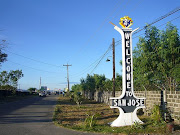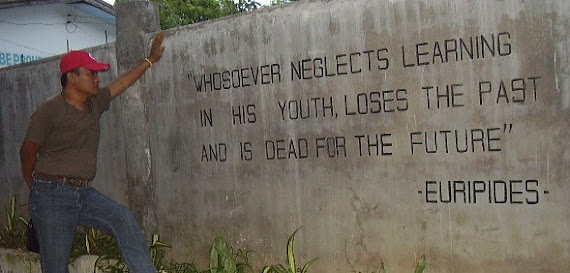The
island and the company
Semirara,
a 5,118-hectare island is within the jurisdiction of Municipality of Caluya in
Antique province, lies between mainland Mindoro and Panay. From San Jose
(Occidental Mindoro), it would take about 4-5 hours by ferry boat.
The
Semirara Mining and Power Corporation is the biggest producer of coal in the
Philippines. Apart from coal, the once marine life-rich island has other
mineral reserves that the company has the right to explore and mine. The whole Semirara
island has about 824 thousand tons of silica, 1.2 billion tons of limestone,
and 2.9 million tons of clay. The Municipality of Caluya’s poverty incidence in
2013 is pegged at 47% but on that same year, the mining company, in stark
contrast, posted a P12.6 billion revenue for coal production.
With
regards to the coal mining, the Department of Energy (DOE) granted the
extension of the company’s Coal Operating Contract until July 14, 2027. The
Semirara Mining and Power Corporation or simply Semirara, is part of the DMCI
Holdings, Inc. Aside from coal mining, the group is operating power, property
and nickel mining businesses. DMCI Holdings, Inc. has allotted P14.5 billion to
Semirara for capital spending onwards. At present, the coal company is steadily
increasing its capacity to a maximum of 16 million metric tons of coal to cope
up with the approving prices and demand of the local market. This 2017 is also
planned to be a year of updating the company’s operations and maintenance
programs to improve efficiencies of its power plants. Therefore, there goes the
proposed coal-fired power plant in San Jose, Occidental Mindoro.
Its
reserve and power capacity
In
November 2004, an independent technical review conducted by Minarco Asia Pty
Ltd. It shows that in the Panian Pit is estimated to have 52 million MT of
already available coal while there are still 210 MTs of in-situ (requiring an
additional confirmatory drillings to show that the reserve is proven and
recoverable) in the pit. Inside another pit, Himalian Pit, there is a potential
52 million MTs of in-situ coal inside it.
Two
years later, in December 2006, consultants from Australia supervised the
confirmatory drilling in Panian Pit and as per standards of Australia’s Joint
Ore Reserve Committee or JORC, 62 million MTs and 6 million MTs of coal were categorized.
The Panian Pit is the place where several workers died due to a landslide
incident in July 2015.
On
July 11, 1977, the Energy Development Board, precursor of the Department of
Energy (DOE), awarded a 25- year Coal Operating Contract (COC) to a group of
three private companies, incorporated as Semirara Coal Corporation or SCC and
in 2004 it changed its name to Semirara Mining Corporation or SMA and later
became the Semirara Mining and Power Corporation. The DOE is most likely to
renew the coal extraction contract every time it expires, or at least that was
the expectation of the mining firm.
Semirara
is the only power producer in the Philippines that owns and mines its own fuel
source which is coal. According to them, their whole operation can produce 8
million MTs of coal per annum. Reportedly, the expansion of the coal mining
operations, which involves an estimated 10,000-hectare area, is already 5 to 7
KMs off the shore. The company boasted that it has an installed generating
capacity of 600MW, with an additional 1,200MW in the pipeline. Occidental
Mindoro to date has only a peak-hour demand of 19 MW of electricity.
Meeting
the SP and the EC
The
Provincial Board of Occidental Mindoro in its Facebook account reported that
last June 16, 2017, the so-called “unified leaders” (the
Sato-Mendiola local political faction) had a meeting with some top brasses of
the DMCI Power Corporation and the Semirara Mining and Power Corporation
regarding the conglomerate’s proposed coal-fired power plant. Further, the
provincial board stated that because of the 12.17% annual power growth
demand of the province, the current power suppliers can no longer be enough for
such a huge demand in the future.
The
social media post which was quoted here in verbatim further states, “Three options for this proposal is
presented. Option 1, to be constructed in mainland San Jose, Option 2 in Ilin
Island while Option 3 is the Semirara Mine Mouth. Our leaders are taking into
consideration the environmental impact and the like for this project. On the
other hand, the geothermal plant being eyed in Naujan is not feasible and so
the government is looking for other options to address the province’ current
power situation.” With the fragile
island ecosystem of the island, the provincial board is bound to weighing
matters in its legislative scales.
The
members of the Sangguniang Panlalawigan (SP) are aimed at increasing 20 MW
diesel power plant of the Occidental Mindoro Consolidated Power Corporation
(OMCPC) in the town of San Jose.
Weeks
after the SP meeting top political leaders, according to sources, went to
Semirara for an ocular inspection and reportedly fetched by the company’s
private plane from San Jose to Semirara. No result was disclosed to public as
of post time regarding the visit.
On
July 8, 2017 on the other hand, same representatives from the DMCI Power
Corporation oriented the Occidental Mindoro Electric Cooperative (OMECO) Board
about their company and later expressed their willingness and intent to
participate in the Competitive Selection Process (CSP) in due time. The
electric cooperative (EC) just listened to them and no assurances or whatever
was given by its Board. OMECO reportedly eyeing for
another independent power producer to join the bidding. This IPP is projected to establish a
diesel-fired power plant in Mamburao and the project is anchored on the EC’s energy development
plant for the province.
But
prior to the two presentations in two different bodies, Mindoro’s electricity
requirement is being supplied by the National Power Corp. (Napocor) through its
missionary electrification and DMCI Power Corporation which is an affiliate of
Semirara. DMCI Power Corporation provided power rentals for Napocor for some
time until the OMCPC came in.
By
2018, the 25-year Energy Conversion Agreement (ECA) entered into by OMECO and
Island Power Corp. (IPC) will finally expire, finally allowing more investors
to invest in Occidental Mindoro. The Semirara Mining and Power Corporation is
one of the prospects.
Coal
: Dirty and mean
Coal
is considered by the environmentalists as the dirtiest fuel on earth. Many
countries in the world considered coal as fuel for global warming that is why
many of the coal mines are banned in many parts of the globe. Philippines is
host to 10 coal-fired plants and majority of which are located in Mindanao.
It
is a nation-wide call of environmental groups to continuously campaign in convincing
the government to shut down all or most of the plants and replace them with
facilities that tap renewable energy. They insist “green energy” like solar,
geothermal and wind over “dirty energy” like coal. According to Owen Migraso,
executive director of Center for Environmental Concers (CEC), “The government should not pursue coal to
generate electricity for industrialization. Technology is available in
developed countries. There are technology transfer laws. The important thing to
consider is how renewable energy will benefit the people.” According to an EC insider, solar is the only feasible renewable energy in Occidental Mindoro.
Passive
populace
Though
the people of Occidental Mindoro is yet to be informed on the details of the
project, vigilance is deemed by some local environmentalists, both in the
government and the public sector, as a future course of action.
Occidental
Mindoro in general, San Jose in particular, is not known to such active and
massive pro-environmental issue-projection and mass actions since time in
memoriam. It is a reality that any aggressive anti-environment project can
easily exploit.
------------
(Photo: Business World)
---------------
References and resources:
http://www.philstar.com/business/2017/02/27/1676013/semirara-supply-power-mindoro








